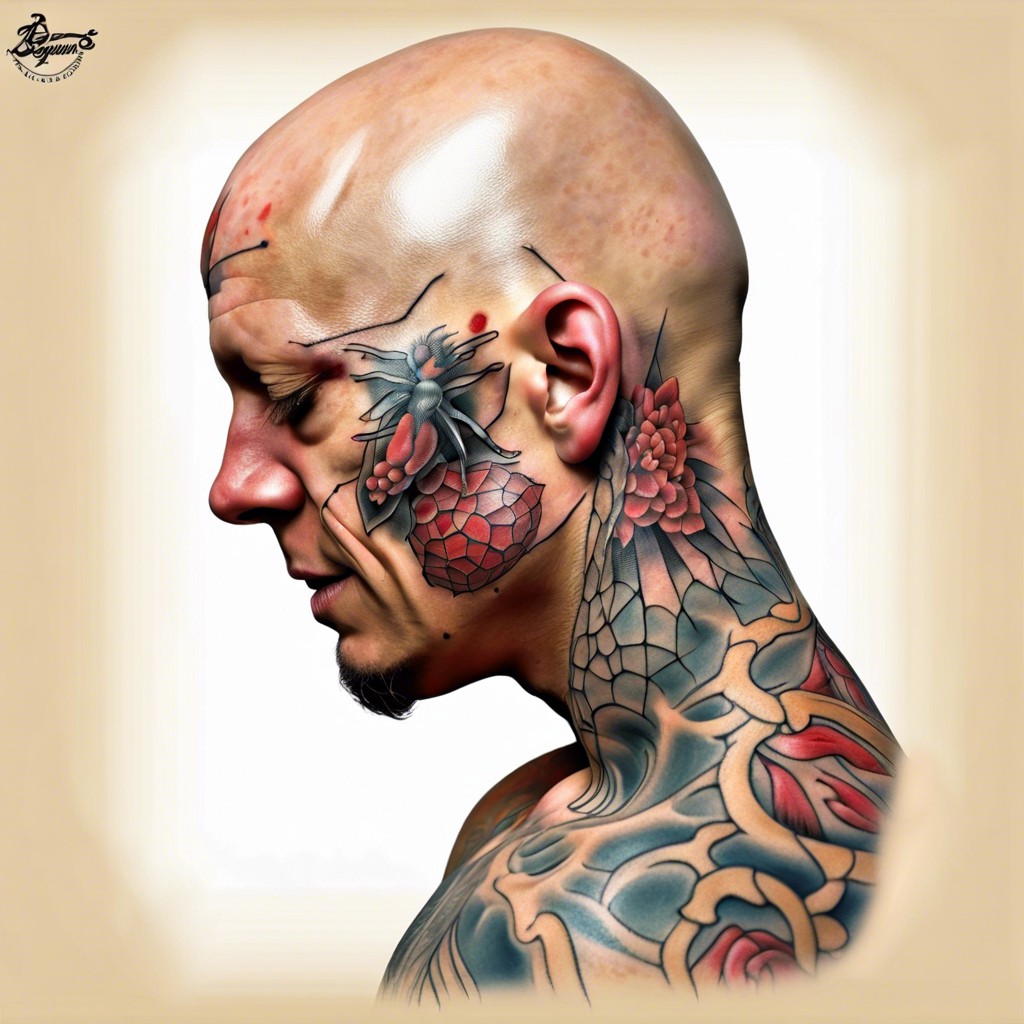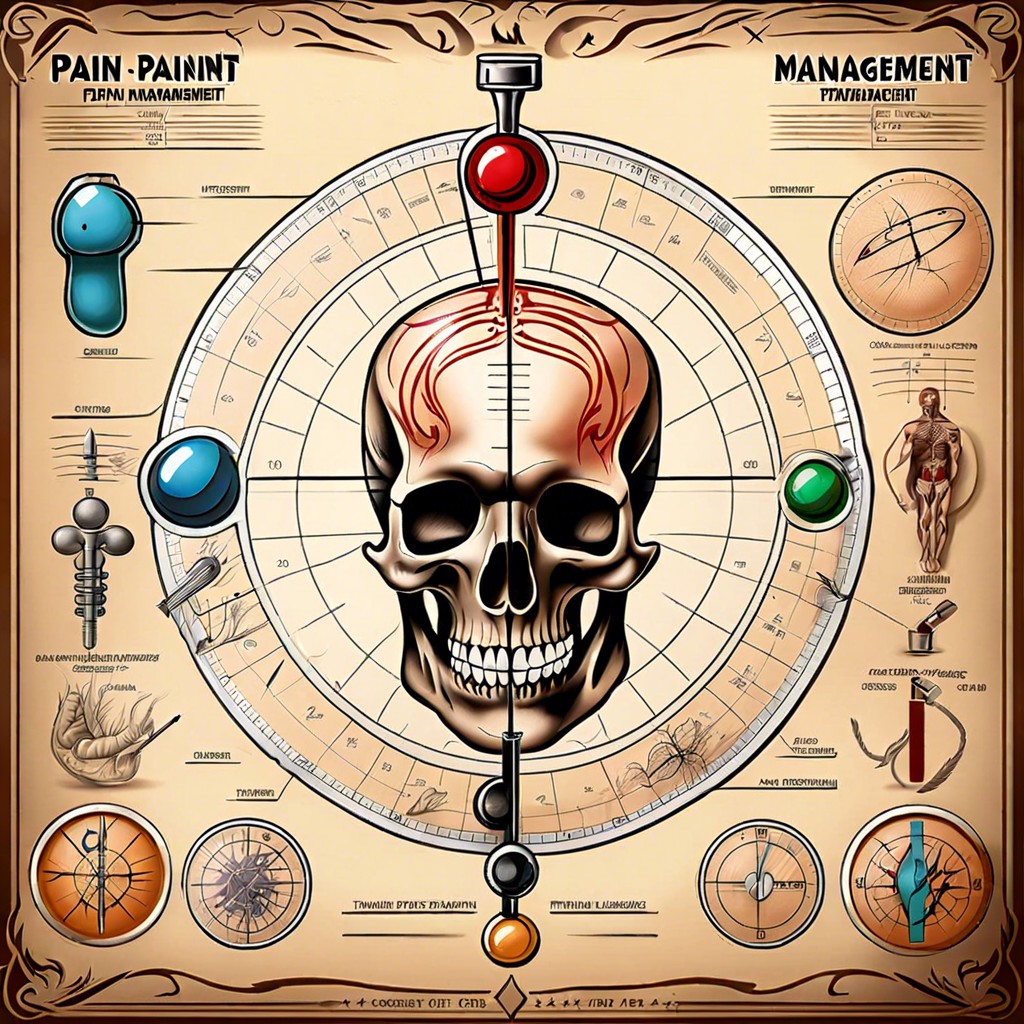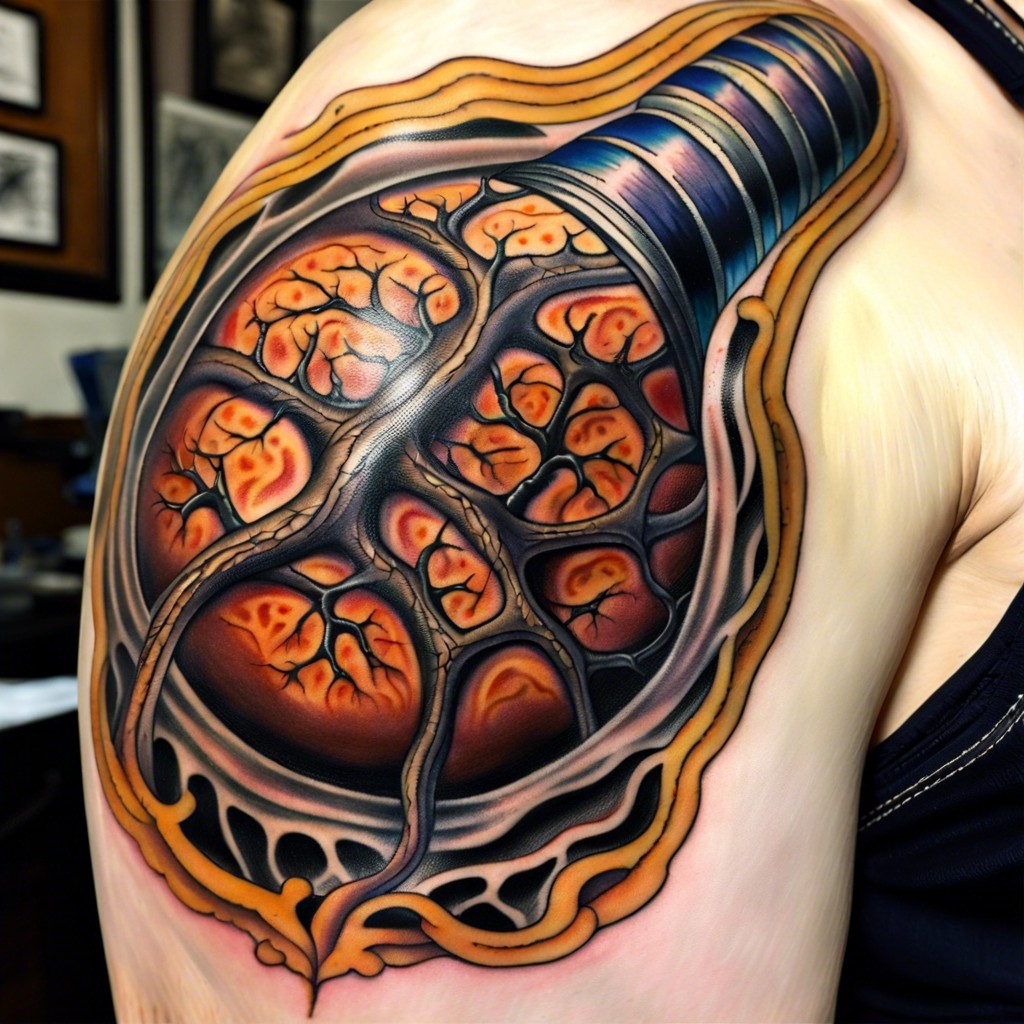Discover the areas of the body where getting a tattoo might be more or less painful, helping you make an informed decision before your next ink session.
Pain Level Rankings for Different Body Parts

The chart segments the body into zones, assigning each a pain level from light to intense based on average individual experiences.
High-pain areas often include the ribs, ankles, and groin, while the arms and thighs typically rank lower.
This ranking provides a quick reference to gauge potential discomfort before committing to a specific tattoo location.
Visual Diagram of the Human Body With Pain Zones

A visual diagram serves as a clear, intuitive guide to pinpoint exact areas where tattoo pain can be more intense. It employs color gradations to effortlessly convey which zones might require extra preparation for the discomfort.
The diagram simplifies decision-making for prospective tattoo recipients by visually summarizing the body’s varying pain sensitivity.
Color-coded Chart Indicating Most to Least Painful Areas

A color-coded chart simplifies understanding by visually distinguishing areas based on pain levels, transitioning from red for high pain zones to blue for the least painful ones.
Such a chart quickly guides individuals to regions they may want to consider or avoid for their tattoo placement based on their pain tolerance.
It serves as a handy reference during the planning stage, helping to set expectations for the tattooing experience.
Scale of Pain Intensity From Tattoos On Sensitive Regions

Areas with thinner skin close to bones, such as the ribs or ankles, often report the highest intensity of pain during tattooing. Sensitive regions like the armpits or groin can experience severe discomfort due to a higher concentration of nerve endings. The scale provides a clear expectation for those considering tattoos in these high-sensitivity areas.
Comparison Between Bony Areas Vs. Muscular/fatty Areas

Tattoo placement over bony areas, such as the ankle or ribcage, typically experiences a sharper, more intense pain due to the lack of cushioning. Muscular or fatty areas like the thighs or upper arms tend to offer a more bearable sensation, as the density of these tissues can absorb some of the needle impact.
The chart provides a straightforward comparison, allowing individuals to anticipate the pain level based on the chosen tattoo location.
Tattoo Pain Chart for First-time Inkers

For those entering the tattoo world, a specialized chart helps set realistic expectations about the pain involved. It highlights less painful areas ideal for novices, easing them into the experience.
This guide also offers a practical way for first-timers to choose a design size and placement that balances their pain tolerance with their desire for ink.
Gender-specific Pain Chart Differences

Men and women may experience tattoo pain differently due to hormonal and physiological variations. This aspect of the chart provides tailored insight into which areas may be more sensitive for each gender, aiding in decision-making.
It serves as a guide for setting realistic expectations for pain prior to getting inked.
Pain Chart Based On Typical Needle Depth and Technique

Needle depth significantly influences discomfort, with deeper penetrations typically causing more pain.
Differences in tattooing technique, such as shading versus lining, create varying levels of sensation.
The chart provides insights into how the type of needle action can affect pain perception during the tattoo process.
Healing Pain Vs. Tattooing Pain Chart

Healing pain can differ significantly from the sensation felt during the actual inking process, often presenting as a persistent ache rather than sharp intensity. A full recovery involves various stages, each with unique discomfort levels, which may be less about sharpness and more about irritation and sensitivity.
This aspect of the pain chart offers insights into what to anticipate post-tattoo, including aftercare’s potential for mild throbbing and itchiness.
Pain Chart for Different Tattoo Sizes and Durations

A larger tattoo often correlates with increased discomfort due to longer exposure to the needle. Short duration sessions generally result in manageable pain levels but might require multiple visits.
The chart showcases how the combination of size and time impacts overall pain, enabling better preparation for extensive pieces.
Annotated Pain Chart With Personal Testimonies

Incorporating first-hand accounts adds a layer of realism to the chart, allowing for a more nuanced understanding of tattoo pain. These narratives provide context to the numerical pain ratings, painting a vivid picture of the inking experience.
Each story highlights individual pain thresholds and coping mechanisms, offering a personalized glimpse into the tattoo process.
Illustration of Pain Receptors Concentration in Body Parts

High concentrations of pain receptors in areas such as the ribcage and ankles lead to more intense tattoo pain. Fewer pain receptors in regions like the outer arm result in a less painful tattooing experience.
This understanding enables individuals to make informed decisions on placement based on their pain threshold.
Pain Chart Including Pain Management Tips

Proper breathing techniques can significantly reduce tattoo pain, transforming discomfort into a manageable experience.
Numbing creams, when applied before the session, may provide temporary relief in areas anticipating higher levels of pain.
Hydration and a good night’s sleep prior to getting tattooed contribute to an individual’s pain tolerance, easing the intensity of the sensation.
Chart Comparing Tattoo Pain to Common Daily Activities

The concept equates the sensation of getting tattooed on various body parts to everyday experiences like snapping a rubber band against the skin or enduring a sunburn.
It demystifies tattoo pain for the uninitiated by aligning it with common physical feelings they’ve likely encountered.
This provides a familiar reference point, simplifying the anticipation of tattoo pain intensity.
Tattoo Pain Chart Correlating With Skin Thickness and Nerve Endings

Areas with thicker skin tend to have dispersed nerve endings, resulting in relatively lower pain during tattooing. Conversely, regions where the skin is thin and nerve endings are concentrated often equate to a sharper, more intense pain sensation. This variation is essential when considering placement for those with low pain tolerance.
Get inspired by more ideas:





